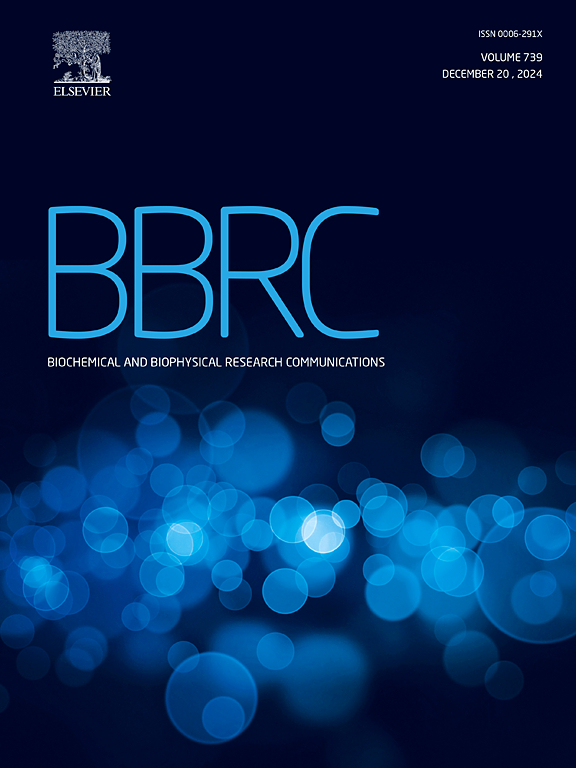16S rRNA gene sequencing for bacterial identification and infectious disease diagnosis
IF 2.5
3区 生物学
Q3 BIOCHEMISTRY & MOLECULAR BIOLOGY
Biochemical and biophysical research communications
Pub Date : 2024-11-13
DOI:10.1016/j.bbrc.2024.150974
引用次数: 0
Abstract
16S rRNA gene sequence is the most common housekeeping genetic marker to study bacterial phylogeny and taxonomy. Therefore, 16S rRNA gene sequencing has the potential to identify novel bacteria and diagnose bacteria. This study compared 16S rRNA gene sequencing with conventional PCR for bacterial identification and disease diagnosis. The bacterial community in healthy and diseased hosts was analyzed by 16S rRNA gene sequencing. 16S rRNA gene sequencing is more sensitive than conventional PCR in detecting bacteria. Moreover, 16S rRNA gene sequencing is adequate to identify novel bacteria. 16S rRNA gene sequencing demonstrated that most pathogenic bacteria persist in diseased or healthy hosts in different abundance. Pathogenic bacteria, such as well-known chicken pathogen Avibacterium paragallinarum, Ornithobacterium rhinotracheale, and Gallibacterium anatis, were identified as indicator species of diseased samples. Alpha diversity analysis showed that the healthy group species is significantly higher than in the diseased groups. Beta diversity analysis also demonstrated differences between healthy and infected groups. The study concluded that 16S rRNA gene sequencing is a more sensitive method for detecting pathogens, and microbiota analysis can distinguish between healthy and diseased samples. Eventually, 16S rRNA gene sequencing has represented the potential in human and animal clinical diagnosis and novel bacterial identification.
16S rRNA 基因测序用于细菌鉴定和传染病诊断。
16S rRNA 基因序列是研究细菌系统发育和分类最常用的看家遗传标记。因此,16S rRNA 基因测序具有鉴定新型细菌和诊断细菌的潜力。本研究比较了 16S rRNA 基因测序与传统 PCR 在细菌鉴定和疾病诊断中的应用。通过 16S rRNA 基因测序分析了健康和患病宿主体内的细菌群落。在检测细菌方面,16S rRNA 基因测序比传统 PCR 更灵敏。此外,16S rRNA 基因测序还能识别新型细菌。16S rRNA 基因测序表明,大多数病原菌以不同的数量存在于患病或健康的宿主体内。病原菌被鉴定为疾病样本的指示种,如众所周知的鸡病原菌Avibacterium paragallinarum、Ornithobacterium rhinotracheale和Gallibacterium anatis。阿尔法多样性分析表明,健康组的物种明显多于患病组。Beta 多样性分析也显示了健康组和感染组之间的差异。研究认为,16S rRNA 基因测序是检测病原体的一种更灵敏的方法,微生物群分析可以区分健康样本和患病样本。最终,16S rRNA 基因测序在人类和动物的临床诊断和新型细菌鉴定方面具有巨大潜力。
本文章由计算机程序翻译,如有差异,请以英文原文为准。
求助全文
约1分钟内获得全文
求助全文
来源期刊
CiteScore
6.10
自引率
0.00%
发文量
1400
审稿时长
14 days
期刊介绍:
Biochemical and Biophysical Research Communications is the premier international journal devoted to the very rapid dissemination of timely and significant experimental results in diverse fields of biological research. The development of the "Breakthroughs and Views" section brings the minireview format to the journal, and issues often contain collections of special interest manuscripts. BBRC is published weekly (52 issues/year).Research Areas now include: Biochemistry; biophysics; cell biology; developmental biology; immunology
; molecular biology; neurobiology; plant biology and proteomics

 求助内容:
求助内容: 应助结果提醒方式:
应助结果提醒方式:


